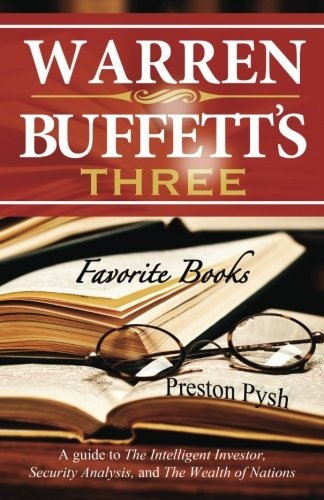The Intelligent Investor by Benjamin Graham
Post on: 19 Октябрь, 2015 No Comment

Basically, price fluctuations have only one significant meaning for the true investor. They provide him with an opportunity to buy wisely when prices fall sharply and to sell wisely when they advance a great deal. At other times he will do better if he forgets about the stock market and pays attention to his dividend returns and to the operating results of his companies.
-Benjamin Graham, The Intelligent Investor, 1949
By far the greatest common-sense book ever written on investing is The Intelligent Investor by Benjamin Graham. Its no secret that the book comes highly recommended by Warren Buffett, who studied and worked for Graham before becoming one of the richest men in the world by applying Grahams investing principles.
From the opening chapter, Graham insists that investors hold the distinction between investment and speculation as vitally important and avoid the latter as much as humanly possible. In practice, that distinction can easily get lost when participants in public markets start huffing a little too much glue! But Graham, having suffered catastrophic losses in the great crash of 1929, developed a set of value investing principles which sought to promise a return of capital plus an acceptable rate of return.
Grahams sought to purchase only deeply undervalued stocks and bonds at prices well below his estimation of the companys liquidation value. To him, this concept of margin of safety was a hedge against even the most conservative valuation. Graham openly admitted that valuing assets is a highly subjective art form. He reasoned that, much as an engineer would design a bridge to withstand far more weight than it would ever be required to hold in real life, by buying assets at far below his estimation of their intrinsic value, he would ensure his capital was safe.
Graham would likely view the current distinction between the academic disciplines of Behavioral Finance, formerly referred to as Finance, and the Efficient Market Hypothesis , which bizarrely argues that markets always behave rationally and all public information is instantaneously priced into assets, as a sure sign of a mass delusion.
While were all aware that the stock market exhibits a tendency to rise and fall in an unpredictable and erratic pattern (despite experts incessant predictions), it is Graham who tells us, in what is perhaps his most valuable insight, that these market fluctuations only serve to offer value investors a price-cut on shares of well-run, profitable companies and to then sell those shares when those fluctuations drive prices to well in excess of the intrinsic value of the underlying company.

Of course, skeptics argue that the techniques recommended by the author served well in that era, but business has evolved and new criteria are needed since the absolute values Graham witnessed are scarcely found in the U.S. today. This is somewhat true, as a broader understanding of common stocks as an acceptable long-term investment for retirement has led to an evolution of market pricing. Its also true that this logic is periodically stretched to such extremes as to morph into hysteria (dot-com, sub-prime bubbles).
Even Buffetts thinking was strongly influenced by his long-time business partner Charlie Munger, who is frequently quoted as saying forget what you know about buying fair businesses at wonderful prices; instead, buy wonderful businesses at fair prices. This makes all the more sense when considering the massive compounding value of Berkshires underlying businesses throughout the years and the scarcity of Graham-style bargains in todays markets.
Berkshires significant stakes in stalwart companies like GEICO, Coca-Cola, Wells Fargo, and American Express reveal such a long-term growth-oriented investment rationale. Each of these companies exhibits the characteristic moat, or defensibly profitable businesses, that Buffett and Munger choose to buy and hold over long periods. And Buffett, despite his long-time aversion to technology companies, recently added a sizable stake in tech bellwether IBM, so it would appear he is still innovating new investment strategies to this day.
This value/growth investing style was probably most eloquently written about by legendary investor Philip Fisher, whos classic Common Stocks and Uncommon Profits helped launch a revolution in modern investing. Fisher advocated a detailed assessment of future growth potential through a due diligence methodology he referred to as Scuttlebutt. Funny name, but Im guessing it sold a little better than GO DO YOUR HOMEWORK!
Buffett rightly continues to urge readers to pick up a copy of Grahams The Intelligent Investor. Modern investors can still learn a lot from the classics, but for those of you who have little-to-no time at all to spare, Buffett offers a helpful hint: pay special attention to chapters 8 and 20 at the very least. The Intelligent Investor is well worth the price of admission and continues to influence the strategies of the leading investors of our time.














